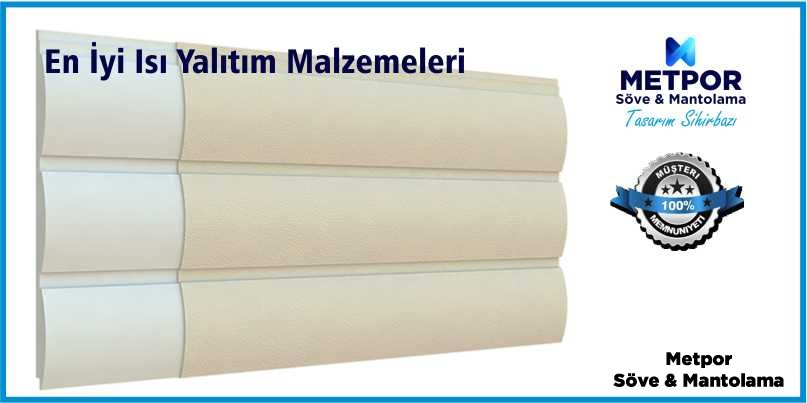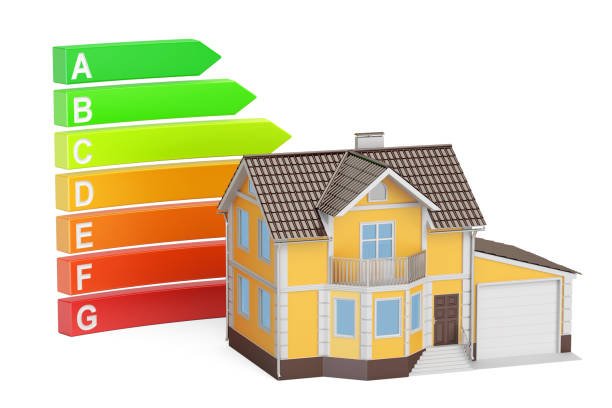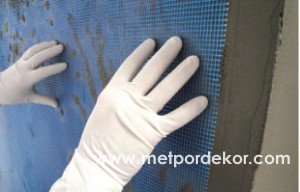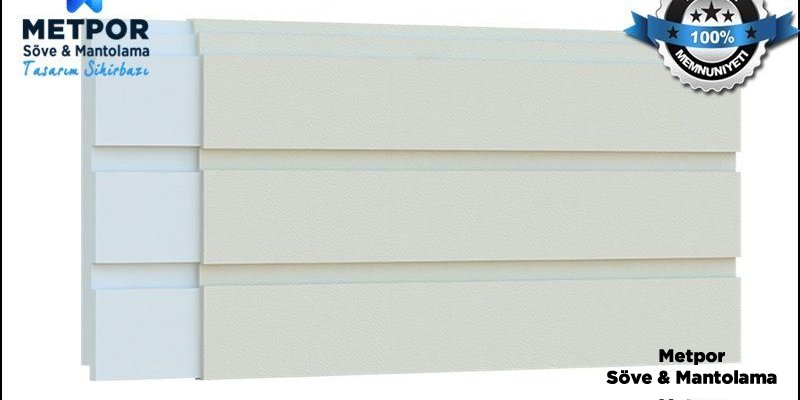Best Thermal Insulation Materials, Exterior Thermal Insulation Materials
1. What are the thermal insulation materials? examples
- The best thermal insulation material
- Unknown insulation materials
- Exterior thermal insulation materials prices
- Thermal insulation material recommendation
2. What are alternative thermal insulation materials?
- Interior insulation materials and types
- Decorative interior wall insulation materials
- exterior cladding
- Natural thermal insulation materials
3. Which material should be chosen for building insulation?
- Thermal insulation board prices, the best jacketing method
- Xps thermal insulation, roof insulation materials
- The World's Best Thermal Insulation Materials
- thermal insulation materials foam prices
4. Conclusion
Together, we will give answers to " Which materials should we use for thermal insulation? ", which is frequently asked about sheathing within the scope of information society services . How to make thermal insulation in our previous articles ? We answered the question.
Thermal insulation materials are used to increase the heat transmission resistance of adjacent building materials or to minimize the amount of heat escaping to the outside, according to TS 825 and German DIN 4108 norms, for materials with a heat transmission coefficient below 0.060 kcal/mhoC value, insulation materials above this value materials are also the best heat insulation material or jamb coating materials.
Thermal insulation is the procedure of coveringthe outer surface of a building with materials with thermal insulation properties . Nowadays, sheathing, which has become an indispensable program for every newly built building, can be easily applied to old buildings if desired.
Sheathing refers to the procedure created with the aim of providing thermal insulation in buildings.
We use thermal insulation materials for jacketing on this side . We can explain thermal insulation as all the procedures created to eliminate the temperature difference in the environment. In thermal insulation applications , " insulation materials " are used to reduce heat transfer.
At this point, material types with high insulation coefficient should be preferred for the sheathing application to be made. These materials in question are called " heat insulation materials ". What are the thermal insulation materials we use when doing exterior sheathing ? constitutes the main subject of our article.

How to insulate houses? If we ask, we can explain it as follows.
It can also be used as exterior insulation materials for exterior cladding plates in buildings, building elements that reveal the walls, roofs and floors of buildings, and for the insulation of installation systems and door-window insulation . Qualified joinery and insulating glass units of these thermal insulation materials are also very important for effective " heat insulation ".
Knowing the properties of thermal insulation materials is one of the main issues to be considered in order not to have hesitations in choosing thermal insulation materials for exterior cladding in buildings . In addition, window jambs are strong thermal insulation materials . They are basic insulation materials that contribute to energy savings by providing high " insulation " there.
Thermal Insulation Materials Properties and Types
- Thermal conductivity coefficients of thermal insulation materials should be small . In this way, they provide " energy saving ".
- Insulation materials to be used in buildings should not be heavy.
- Sheathing materials should be odorless. It should not emit offensive odors in the long run.
- It should have the ability to absorb water and moisture.
- "Thermal insulation materialsto be used forshould not have spaces on which bacteria and pests can nest.
- It should be resistant to rotting.
- Insulation materials should not lose their first day feature.
- It should not be flammable.
- Insulation materials should be long-lasting.
- It should be suitable for transportation and should not harm human health.
- Jamb covering materials should be economical and available.

Exterior Thermal Insulation Materials with Granular Structure
Among the frequently asked questions , there is also " heat insulation materials " with granular structure. Such insulation materials have a granular structure, andthere are air gaps between the thermal insulation materials of the buildings. Due to the irregularity of the particles, air movements are very less. Therefore, heat transfer by convection is low. What is sheathing from this link ? You can get more detailed information about the subject.

What are Thermal Insulation Materials? Examples
Detailed natural and artificial materials are used in the insulation application of hot and cold surfaces. Many insulation applications can be made as loose fill. In these cases, the thermal insulation material is poured onto the place to be insulated. With a material to be applied on hot and uneven surfaces, the life of the insulation is extended by giving the surface an elastic feature.
Thermal Insulation Materials with Fibrous Structure
The width, number and density of free air channels between the fibers of the materials are low. Air layers formed between the fibers create resistance against convection heat transfers and minimize heat transfer.
Cellular Insulation Materials
Cells should be as small as possible in order to minimize heat transfer by convection of cellular sheathing materials . You can access detailed information about the renovation of old buildings from the link.
Reflective Insulation Materials
Such " insulating materials " reflect a large part of the heat back due to their low absorption coefficient.
Last Group Thermal Insulation Materials
They arise from a mixture of two or more of the above four sets of materials. In reality , it is not possible to find a " heat insulation material " that has all the features together .
Thermal Insulation Materials and Insulation Performance
Thermal Conductivity
Thermal conductivity of thermal insulation materials to be used for exterior cladding is low due to their porous or fibrous structure. Amorphous solids have more gas vacancies than crystalline solids. Therefore, the thermal conductivity of such materials is lower.
When choosing among the thermal insulation materials, if all other factors are equal, choosing the material with the lowest thermal conductivity is important in terms of providing the expected savings from the application of the jamb models .
Resistance of Insulation Materials to Mechanical Damage
Thermal insulation materials are mechanically weak. For this purpose, they can be used infrequently without protection. After the exterior sheathing program, the insulation is covered with a protective layer.
Resistance to Absorption
The thermal conductivity of the materials used for thermal insulation increases depending on the temperature, and it does not absorb moisture. If the insulation application is in humid or atmospheric conditions, the upper side of the insulation should be covered with a waterproof layer. Otherwise , deterioration may occur on the insulation materials and surfaces used. Correct thermal insulation on the exterior of buildings is one of the issues to be considered.
Fire Resistance of Insulation Materials
Heat insulation materials must have fire resistance properties . Insulation materials should not be operated at a temperature above the recommended degree in the program to be carried out. The temperature resistance limit of the sheathing materials must always be above the maximum surface temperature.
Reuse of Insulation Materials
Except for plastic insulation materials , it is possible to change the position of any other excess material. The displacement of metal materials is simple. Plastic materials have a slight resistance to damage, but reuse is not ideal. Polystyrene rigid foam materials are suitable for recycling.
Being Economical
The selection of the ideal material suitable for its purpose and the insulation thickness of the material (polystyrene rigid styrofoam) determine the cost of the insulation. An important point to be considered is the selection of the region and thickness of the thermal insulation material to be selected and its long-life usability. The protective layers and covers used on the insulation extend the life of the insulation (hard foam). There is a wide variety of thermal insulation materials on the market . Insulation material prices vary according to size, thickness and material type . It is B1 class non-flammable styrofoam and must comply with fire regulations. Eps can be preferred as white or gray carbon styrofoam .
Health Hazard of Insulation Materials
Dust that comes out of the heat insulation materialsused for sheathing on the exterior and can go to the lungs through the respiratory tract can harm human health. Generally, asbestos is the most harmful substance to human health. Such sheathing materials should be stored away from the working area. Some insulation materials cause itching when they come into contact with the skin, such "insulating materials" should definitely be carried and applied with gloves.

Thermal Insulation Material Recommendation
Thermal insulation material will be recommended and the material selection and the selected exterior coating thickness are two important factors in the sheathing application for the purpose of thermal insulation to be made on the exterior of the buildingsThe heat insulation boards to be selectedmust not absorb water into their body. Fuga thermal insulation boards and siding printing facade coatings produced by Metpor Jamb and Sheathing are materials with zero water absorption rate. In addition, high vapor diffusion resistance, pressure and impact resistance, heat retention and heat transmission coefficient are also very important. However, thermal insulation material prices are among the leading priorities.
Building owners allocate an extra budget for exterior decoration and make reasonable choices for that budget.
By searching the internet in the form of exterior cladding images , you can direct the building facade design that will be formed in your mind. Then, what needs to be done is to exchange ideas with the sheathing companies and find the most reliable exterior coating company that gives the most reasonable suggestion .
Which Thermal Insulation Materials Are Used in Buildings?
The World 's Best Accepted Thermal Insulation Materials
Examples of Thermal Insulation Materials ;
Glass Wool Insulation materials
It is the state of molten glass that has been made into fiber in detailed ways. The basis of its raw material is silica sand. There are two types, with bakelite and without bakelite.
- Bakelite Glass Wool Material
Density: 10/80 kg/m³
Usage Temperature: Up to +230 oC.
Heat Conduction Catapult: 0.040 W/mK
Water Vapor Transfer for 20 oC average temperature: 542 µgm/Nh - Bakelite-Free Glass Wool Insulation Material
Density: 130 kg/m³
Usage Temperature: Up to +555 oC.
Heat Conduction Catapult: 0.045 W/mK for 50 oC average temperature
Expanded Polystyrene ( EPS ) Thermal Insulation Plate
Polystyrene rigid foam ( styrofoam ) is an artificial organic insulation material . It is expensive among the thermal insulation board prices . It has different uses. It should be used as a thermal insulation material recommendation for terrace roof insulation, roofs and insulation of foundations.
- Density: 15/30 kg/m³
- Usage Temperature: Between -100 / +80 o C.
- Heat Conduction Catapult: 0.033 W/mK for 10 o C average temperature
- Water Vapor Transfer: 25 µgm/Nh
- Rockwool Insulation Materials
- They are fibrous thermal insulation materials obtained from minerals such as basalt, limestone, dolomite. They are produced in two types, high and low density.
- High Density Rockwool Insulation Material
-
Low Density Rockwool
High Density Rockwool Insulation Material
- Density: 100 kg/m³
- Usage Temperature: 0 / 800 o C
- Heat Conduction Coefficient: 0.043 W/mK for 50 o C average temperature
- Water Vapor Transfer: 542 µgm/Nh
Low Density Rockwool Plates
- Density: 33 kg/m³
- Usage Temperature: 0/800 o C
- Heat Conduction Heat Conduction Coefficient: 0.043 W/mK for 50 o C average temperature
- Water Vapor Transfer: 542 µgm/Nh
Extruded Polystyrene ( XPS ) Thermal Insulation Boards
- Polystyrene is the type of rigid foam produced by pulling from the band.
- Density: 45 kg/m³
- Usage Temperature: Between -60 / +75 o C.
- Heat Conduction Coefficient: 0.026 W/mK for 10 o C average temperature
- Water Vapor Transmission: 0.15 / 0.075 µgm/Nh
Polyurethane foam
- Polyurethane is a plastic-based foam obtained by foaming and hardening by means of air between mixtures of two chemical substances (polyol and isocyanate).
- Density: 50 kg/m³
- Usage Temperature: Between -180 / +110 o C.
- Heat Conduction Coefficient: 0.046 W/mK for 10 o C average temperature
- Water Vapor Transfer: 0 µgm/Nh
Phenol Foam
- Phenol is obtained by adding inorganic blowing and hardening agents to formaldehyde bakelite. It has a structure of various densities that is hard but brittle, with small pores and its surface becomes dusty by friction.
- Density: 30 / 35 kg/m³
- Usage Temperature: Between -180 / +120 o C.
- Heat Conduction Coefficient: 0.04 W/mK
- Water Vapor Transmission: 6.8 µgm/Nh
Glass Foam
- Foam glass sheets are thermal insulation materials that are strong against very hard pressure, can be broken easily, are not resistant to friction, and can be easily dusted by surface friction.
- Density: 135 kg/m³
- Usage Temperature: Between -260 / +430 o C.
- Heat Conduction Coefficient: 0.046 W/mK for 10 o C average temperature
- Water Vapor Transfer: 0 µgm/Nh
13 Thermal Insulation Material Recommendations Produced in Turkey
What are the best thermal insulation materials? To give examples;
- Glasswool: (TS 901 – EN13162)
- Rockwool: (TS 901 – EN13162)
- Expanded Polystyrene (EPS): ( TS7316 – EN13163 )
- Extruded Polystyrene (XPS): ( TS11989 – EN13164 )
- Polyurethane Foam (PUR): ( TS EN 13165 )
- Glass Foam : ( TS EN 13167 )
- Phenol Foam: ( TS 2193 – EN 131666 )
- Polyethylene Foam: (TS 418 – EN 12201)
- Cork Boards : ( TS 304 )
- Wood Fiber Boards: ( TS 304 )
- Wood Wool Boards: ( TS EN 13171)
- Expanded Perlite (EPB): ( TS EN 13169)
- Expanded Cork (ICB): ( TS EN 13170 )
Insulation Materials Imported Not Produced In Turkey
- Ceramic Wool
- Melamine Foam
- Poly Isocyanate Foam
- PVC Foam
- vermiculite
- Elastomeric Rubber Foam
- Knauf Vidipan
- Aqua Panel Mesh Cement Based Insulation Materials
Metpor Best Interior Heat Insulation Materials | trendwall
Trendwall decorative " interior thermal insulation materials ", that is, what does the styrofoam wall panel do? What is actually the answer to the question ? also included in the statement. Therefore, these panels have an important place for the decoration of the place and you can use it to beautify any place you want. We can define them as new generation products for " heat insulation materials " in buildings .
They are price-performance products that have both interior sheathing and home decoration features. It is among the " interior heat insulation materials " that are very useful in terms of energy efficiency of houses . What is sheathing? You can also use our article. The heat insulation materials used are very stylish and elegant products in homes, offices or other commercial areas by changing the air of the spaces.
It should be noted that Metpor users find it difficult to choose Trendwall material. Because the "styrofoam wall panels" on 1250 models are thermal insulation materials that are challenging in the decision-making phase with their pattern and texture types .
We should add it as a footnote within the scope of information society services. Our styrofoam wall panel insulation boards are produced from eps white styrofoam materials. XPS is not a thermal insulation material to be used on facade surfaces for exterior sheathing purposes .
Where are Exterior Thermal Insulation Materials Used?
Thermal insulation materials are recommended in ;
- It is used for terrace roof and normal roof insulation.
- Insulating materials are used in construction foundations.
- It is used for exterior wall cladding.
- Use of rigid foam on walls and floors in contact with soil
- It is used in various heat installations.
- It is used in installations, ventilation, floor partitions.
- Glass is used in door openings.
What are window jambs on the exterior ? You can get comprehensive information about jamb materials from our article . The application of sheathing in buildings sometimes allows us to save natural gas energy with styrofoam sheathing materials such as classical plain jacketing, siding print paneling coating materials , jointed jacketing, terracotta exterior jacketing .
Thanks to thermal insulation, energy is saved . Thus, less energy resources are consumed and an economic saving is achieved. For this reason, it is recommended to make thermal insulation in every new and old construction and in areas open to zoning and settlement. Wall panelsinsulation materialshave both decorative and insulating properties forthermal insulation material recommendation. It can be easily applied on the exterior of many buildings such as homes, offices, cafes, restaurants, hospitals and schools.
You can easily apply the wall panel application in wet areas such as bathrooms. You can also benefit from our article on exterior cladding panels . The material components that make up the exterior sheathing systems can be summarized as above. Within the scope of frequently asked questions, the web's sheathing guide with the most detailed explanation has been prepared to answer all the questions you need.
The siding printed exterior cladding models manufactured using natural sheathing materials or an aesthetic appearance to the exterior with their wooden texture. "Paint applications" can be made on it, is resistant to moisture, does not swell and spill, has long-term durability, is resistant to heat and fire, can be easily applied to all kinds of buildings.
Conclusion
Materials with thermal insulation properties rely on their natural molecular structures to minimize the three forms of heat transfer, radiation, conduction and convection. The largest building heat losses are due to air movement. A moving random air mass absorbs heat from an object or surface through which it passes. Heat loss is proportional to the velocity of the moving air in the amount of water possessed and the difference between the temperature of the heat source and the air.
The faster the air movement over a heat source, the faster the heat transfer. The presence of water droplets will act as an accelerator for this application, but control over water vapor saturation will generally need to be applied to avoid problems from condensation.
Condensation can be controlled to a large extent by keeping the water vapor in the air in a warm indoor environment. Vapor control layers on the hot side of the insulation are among the insulation material recommendations to effectively seal the building envelope to air migration between the hot and cold zones .
Open cell exterior cladding materials , such as wool, provide a much greater handling procedure of air between them, resulting in a far greater superiority in quality, inspection and installation workmanship, in terms of limiting performance, construction. If the jamb models are of high quality, they offer superior advantages to the users .
Stone wall cladding and sheathing types can be used with the aim of protecting the houses against impacts and abrasions caused by regional factors, or they can also be used with the aim of providing the facade and environmental order because it prevents the relationship of the houses with the soil floor.







Metpor
info@metpordekor.com
Okunma Sayısı : 213